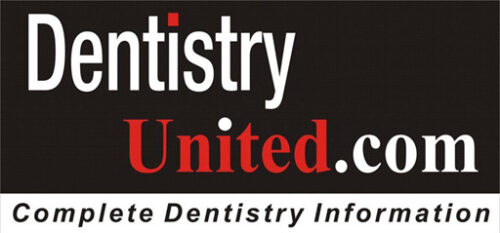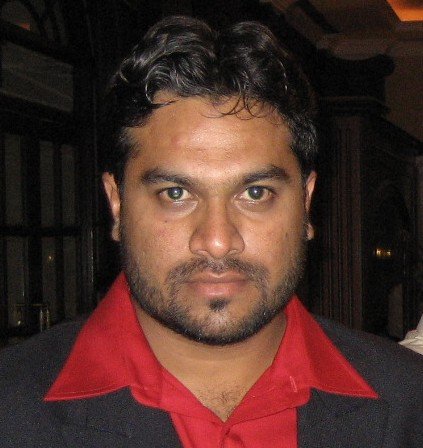Dr. Syed Nabeel, BDS, D.Ortho, MFD RCSI, MFDS RCPSG
In a landmark achievement that redefines the possibilities of spinal cord injury (SCI) recovery, researchers at Fudan University, China, have ushered in a new era of restorative neurotechnology. Their pioneering brain-spinal implant enabled four paralyzed individuals to move their own legs—within 24 hours of surgery. As someone deeply embedded in the intersection of clinical practice and innovation, I present this analysis not only as a dentist and maxillofacial clinician, but as a student of science and vision.
This is not about prosthetics or brain-controlled wheelchairs. This is about neural reintegration—the body reclaiming its innate capacity to move, to feel, and to heal. It is a seismic shift in the philosophy of neurotechnology: from assistance to restoration.
The Breakthrough: A Neural Bypass That Reconnects the Mind and Body
At the heart of this technology are tiny, 1mm neural chips implanted both in the motor cortex of the brain and the spinal cord. These implants decode motor signals from the brain and transmit them across the injury site to the spinal neurons below—essentially bypassing the damaged region.
Where previous brain-computer interfaces (BCIs) focused on enabling external control of devices, this system restores internal, physiological communication. Within 24 hours of implantation, patients began voluntarily lifting their legs. By the second week, they walked 5 meters with support. This represents a tenfold increase in recovery speed compared to earlier trials.
Beyond movement, patients reported a return of warmth sensations and early signs of bladder control—suggesting deeper neurophysiological restoration. We are no longer talking about compensation; we are witnessing reanimation.
Why This Matters: From Assistive to Restorative Paradigms
This development sets a precedent in four transformative ways:
- Speed of Recovery: Voluntary movement within 24 hours and functional walking within two weeks drastically redefine rehabilitation timelines.
- Holistic Restoration: Sensory, autonomic, and motor pathways show signs of healing—beyond the motor-centric approach of many current neurotech tools.
- Indigenous Innovation: Entirely designed and developed within China, this project reflects not only national capability but a shift toward self-sufficiency in critical med-tech.
- Market Growth: The brain implant sector is projected to surpass $10 billion. Such innovations will be the cornerstone of future health economies.
What This Means for Maxillofacial Surgery and Dentistry
As a dentist with orthodontic and surgical training, I see compelling parallels between spinal and craniofacial neurology. The convergence of neural interfacing and adaptive algorithms holds transformative potential for:
1. Restoring Facial Function in Nerve Paralysis
Facial nerve injuries—from Bell’s palsy to trauma—compromise expression, mastication, and speech. Inspired by Fudan’s neural bypass, we may one day implant microchips that decode signals from the facial cortex and directly stimulate facial musculature, restoring dynamic symmetry.
2. Post-Surgical Functional Recovery
In reconstructive maxillofacial surgery, especially post-oncology or trauma cases, nerve-muscle healing is painstakingly slow. Neural implants could expedite jaw or tongue function recovery through targeted stimulation—shortening rehab and improving speech and swallowing outcomes.
3. TMJ Disorders and Orofacial Pain
Trigeminal nerve stimulation could offer non-invasive relief for TMJ disorders. By modulating chronic pain pathways, we may finally shift from splints and pharmaceuticals to neurotherapeutic precision.
4. Smart Dental Implants and Nerve Monitoring
Imagine dental implants that interface with neural networks, adapting placement to avoid injury and promoting proprioceptive integration. Intraoperative nerve mapping and post-op telemetry could make implant dentistry safer and more precise.
5. AI-Guided, At-Home Rehab for Craniofacial Surgery
From cleft palate repairs to orthognathic surgeries, AI-based apps could guide post-op exercises based on real-time muscle feedback—minimizing follow-ups, optimizing outcomes.
6. A New Frontier in Healthtech Markets
Neurostimulation tailored to oral and maxillofacial regions could become a specialty within the $10 billion brain tech market. Software platforms that monitor craniofacial neuro-rehab could serve a broader spectrum of patients—not just those with SCI.
Caveats: Challenges on the Horizon
Translating spinal neurotech to the craniofacial realm is not without challenges. The anatomical density, cosmetic sensitivities, and miniaturization demands of the head and neck region are significant. Moreover, regulatory paths for dental and facial devices are complex and culturally variable.
Cost, accessibility, and patient perception will also play pivotal roles. And yet, these hurdles are the very kind that innovation is designed to overcome.
The Vision Ahead
The Fudan implant marks not just a leap in neural engineering, but a philosophical pivot in medicine: a belief in the body’s capacity to be restored. For those of us in dentistry and surgery, it opens a new narrative—one where we may soon speak not only of reconstructing appearance or function, but of reanimating identity.
Let us prepare—not just with tools and training—but with a vision that embraces neural potential as part of everyday care.
Suggested Reading & Reference Links:
- Nature: Brain-Spine Interface Restores Walking
- Fudan University News Release
- NIH Spinal Cord Injury Fact Sheet
- Facial Nerve Center – Mass General
- AI in Dentistry: ADA Perspectives
- Neurostimulation Market Forecast 2025
- Craniofacial Pain and Neuromodulation – Mayo Clinic
Dr. Syed Nabeel, BDS, D.Orth, MFD RCS (Ireland), MFDS RCPS (Glasgow)
Committed to Orthodontics, Neuromuscular Dentistry & Digital Innovation
Dr. Syed Nabeel is a dentist with 25 years of experience, passionate about patient care, education, and the evolving role of technology in dentistry. He leads Smile Maker Clinics Pvt Ltd with a focus on evidence-based care, TMJ treatment, smile design, and orthodontics.
He founded DentistryUnited.com in 2004 to connect dental professionals globally and launched Dental Follicle – The E-Journal of Dentistry (ISSN 2230-9489) to support academic exchange.
His interests include:
-
Neuromuscular Dentistry & TMJ Care
-
Orthodontics – Braces, Aligners & Digital Planning
-
AI & Digital Workflows in Dentistry
A lifelong learner, Dr. Nabeel also mentors young dentists and speaks on clinical topics, digital dentistry, and practice management. Outside the clinic, he enjoys photography, gardening, and travel.
Grateful to his mentors, peers, and patients, he believes there’s always more to learn and share.
dentistryunited@gmail.com
www.DentistryUnited.com

